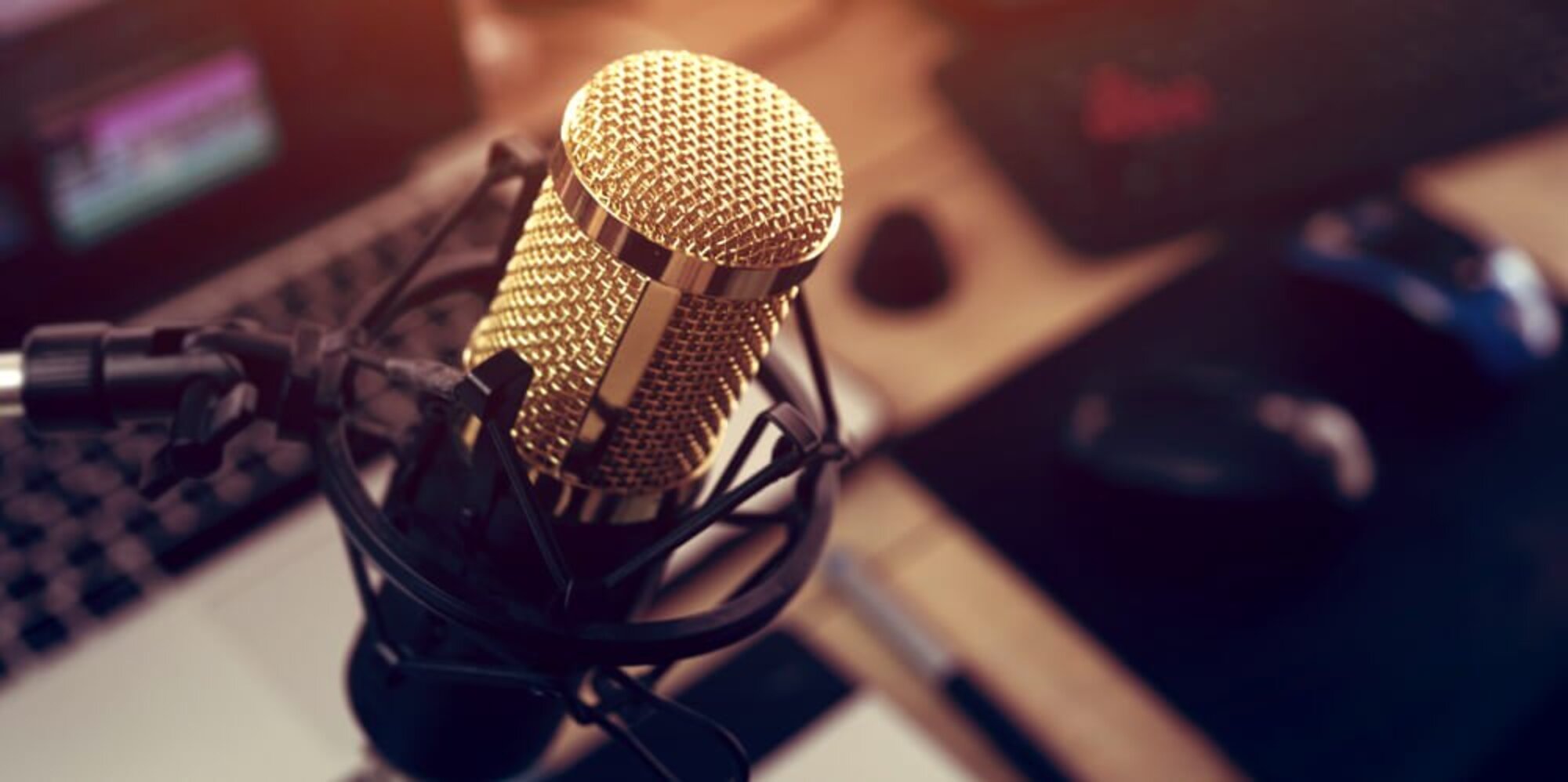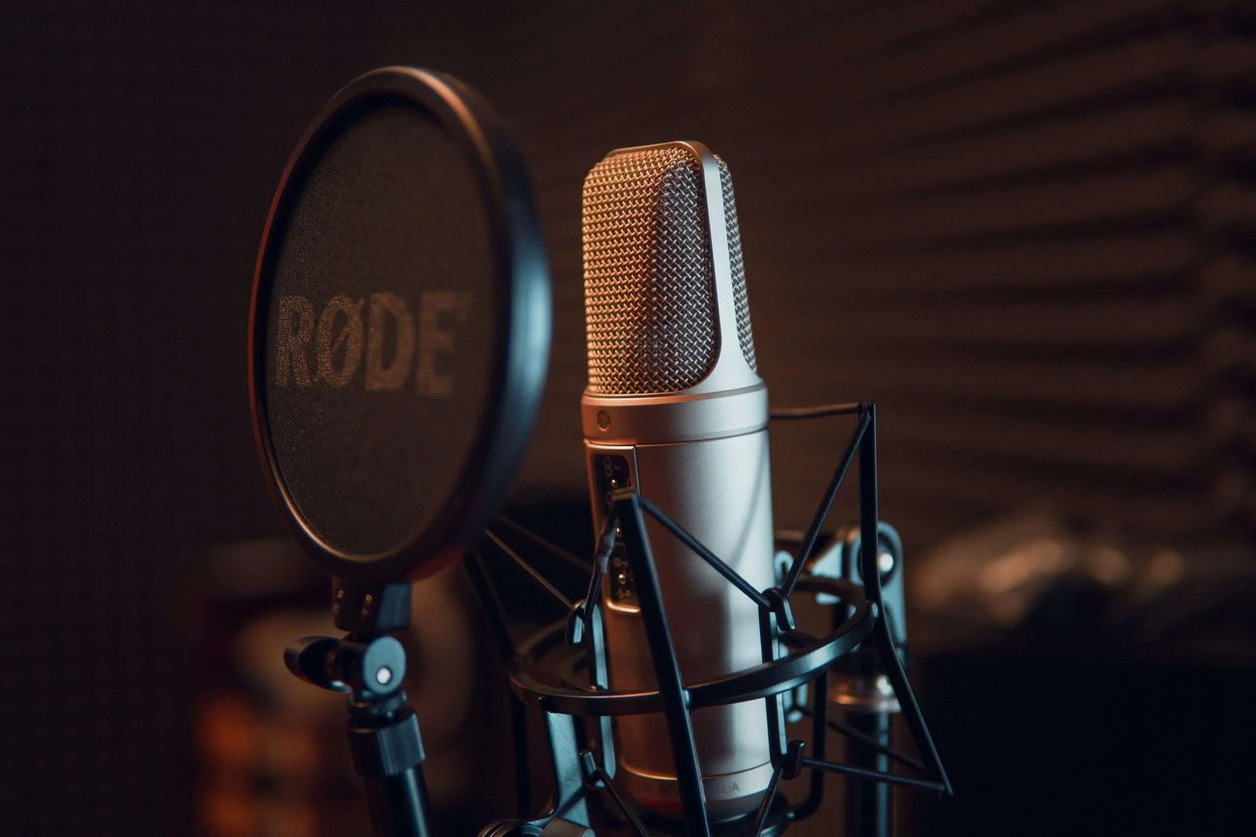Home>Devices & Equipment>Microphone>How To Talk Into A Microphone


Microphone
How To Talk Into A Microphone
Published: February 17, 2024
Learn the best techniques for speaking into a microphone and improving your audio quality. Discover tips for using a microphone effectively.
(Many of the links in this article redirect to a specific reviewed product. Your purchase of these products through affiliate links helps to generate commission for AudioLover.com, at no extra cost. Learn more)
Table of Contents
Introduction
Understanding the Basics of Microphone Technique
Microphones are essential tools for capturing and amplifying sound, playing a crucial role in various settings such as live performances, studio recordings, podcasts, and public speaking engagements. Understanding how to effectively utilize a microphone is key to ensuring clear and professional audio output. Whether you're a musician, podcaster, public speaker, or content creator, mastering the art of speaking or performing into a microphone can significantly enhance the quality of your audio productions.
In this comprehensive guide, we will delve into the nuances of microphone technique, offering valuable insights and practical tips to help you optimize your microphone usage. From understanding different types of microphones to mastering proper microphone etiquette, this article will equip you with the knowledge and skills needed to make the most out of your microphone setup.
Whether you're a novice looking to improve your vocal recordings or a seasoned professional aiming to refine your microphone proficiency, this guide is designed to cater to a wide audience. By the end of this article, you will have a solid grasp of microphone fundamentals, enabling you to confidently communicate, perform, and record with clarity and precision.
So, let's embark on this journey to unravel the secrets of effective microphone usage and elevate the quality of your audio endeavors. Whether you're stepping onto a stage, stepping into a recording booth, or stepping up to a podcast mic, understanding the ins and outs of microphone technique is the first step towards delivering impactful and captivating audio content.
Understanding Your Microphone
Before delving into the intricacies of microphone technique, it’s essential to familiarize yourself with the fundamental aspects of your microphone. Microphones come in various types, each designed to serve specific purposes and accommodate different recording environments. The two primary categories of microphones are dynamic microphones and condenser microphones.
- Dynamic Microphones: These rugged and versatile microphones are ideal for live performances and recording loud sound sources. They are less sensitive to high frequencies and can handle high sound pressure levels, making them suitable for capturing powerful vocals and instruments in dynamic settings.
- Condenser Microphones: Known for their exceptional sensitivity and wide frequency response, condenser microphones are favored for studio recordings, podcasting, and capturing nuanced vocal performances. They require phantom power to operate and deliver detailed, transparent sound reproduction.
Additionally, it’s crucial to understand the directional characteristics of microphones, often referred to as polar patterns. The most common polar patterns include cardioid, omnidirectional, and figure-8 (bidirectional), each offering distinct capabilities for capturing sound from different angles and orientations.
Furthermore, being mindful of your microphone’s frequency response, sensitivity, and impedance can significantly impact the quality and tonal characteristics of your recordings. Familiarizing yourself with these technical specifications will empower you to make informed decisions when selecting and utilizing microphones for specific applications.
By comprehending the unique traits and capabilities of your microphone, you can tailor your approach to microphone technique, optimizing your voice and instrument recordings for exceptional clarity and fidelity. Whether you’re aiming to convey intimate vocal performances or capture the energy of a live musical ensemble, harnessing the full potential of your microphone begins with a deep understanding of its inherent characteristics and capabilities.
Proper Microphone Technique
Mastering proper microphone technique is essential for achieving optimal sound quality and minimizing unwanted noise during recordings or live performances. Whether you’re speaking or singing into a microphone, adhering to best practices can make a significant difference in the clarity and impact of your audio output.
When positioning a microphone for vocal recording or speaking engagements, it’s crucial to maintain an optimal distance between the microphone and your mouth. For dynamic microphones, a distance of approximately 2-5 inches is recommended to capture clear and articulate vocals while minimizing plosives and breath noises. Condenser microphones, known for their sensitivity, may require a slightly greater distance to prevent overwhelming the capsule with excessive sound pressure levels.
Furthermore, maintaining consistent positioning and angling of the microphone is crucial for achieving a balanced and uniform sound capture. Whether you’re addressing an audience or performing in a studio, keeping the microphone at a consistent angle and distance throughout the session ensures a cohesive and professional audio output.
Understanding microphone proximity effect is also pivotal in refining your microphone technique. This phenomenon, prevalent in directional microphones such as cardioid and hypercardioid patterns, results in an increase in bass frequencies when the sound source is in close proximity to the microphone. Leveraging the proximity effect can be advantageous for adding warmth and depth to vocal recordings, provided it is utilized judiciously and in line with the desired tonal characteristics.
Moreover, being mindful of microphone handling noise and employing proper microphone shock mounts or stands can mitigate the transmission of unwanted vibrations and disturbances, contributing to a cleaner and more polished audio capture.
By mastering the art of proper microphone technique, you can harness the full potential of your microphone, delivering compelling and professional-grade audio recordings that resonate with clarity and precision.
Adjusting Your Voice for the Microphone
Adapting your vocal delivery to suit the characteristics of the microphone is a crucial aspect of achieving optimal audio quality and ensuring that your message or performance resonates effectively. Whether you’re engaging in public speaking, vocal recording, or live musical performances, understanding how to adjust your voice for the microphone can significantly enhance the impact and clarity of your audio output.
One fundamental consideration when adjusting your voice for the microphone is modulating your speaking or singing volume to maintain a consistent and balanced audio signal. Avoiding sudden fluctuations in volume and maintaining a steady vocal intensity enables the microphone to capture a uniform and controlled sound, resulting in a more polished and professional recording.
Furthermore, being mindful of articulation and enunciation is pivotal for optimizing vocal clarity and intelligibility when speaking or singing into a microphone. Emphasizing consonants and ensuring precise pronunciation can help convey your message with precision and ensure that every word is captured distinctly, especially in settings where vocal clarity is paramount, such as public speaking engagements or audiobook recordings.
Understanding the tonal characteristics of your voice and making subtle adjustments to accommodate the microphone’s frequency response can also contribute to a more balanced and pleasing audio reproduction. Experimenting with vocal inflections and dynamics to complement the microphone’s inherent tonal qualities can result in recordings that are rich in texture and nuance.
Moreover, being mindful of microphone placement and orientation in relation to your voice can influence the tonal characteristics and spatial dynamics of the recorded audio. Adjusting the angle and proximity of the microphone in accordance with your vocal delivery can yield nuanced and expressive recordings, enriching the sonic dimension of your performances or spoken content.
By honing the skill of adjusting your voice for the microphone, you can optimize the sonic fidelity and emotive impact of your vocal recordings, ensuring that your message or performance is conveyed with clarity, resonance, and authenticity.
Dealing with Common Microphone Issues
While microphones are indispensable tools for capturing sound, they can sometimes present challenges that affect the quality of audio recordings or live performances. Understanding and effectively addressing common microphone issues is essential for mitigating potential disruptions and ensuring a seamless audio production experience.
One prevalent issue encountered when using microphones is feedback, characterized by a sharp, high-pitched sound resulting from the loop between the microphone and the speakers. To mitigate feedback, it’s crucial to maintain a safe distance between the microphone and the speakers, utilize graphic or parametric equalizers to notch out problematic frequencies, and employ feedback suppression devices or software to dynamically attenuate feedback-inducing frequencies.
Plosives, or the popping sounds that occur when pronouncing plosive consonants such as “p” and “b,” can pose challenges during vocal recordings. Using a pop filter or windscreen can effectively diffuse plosives and prevent them from overwhelming the microphone capsule, ensuring that vocal recordings remain free from distracting bursts of air and low-frequency thumps.
Another common issue is ambient noise and room reverberation, which can compromise the clarity and intelligibility of recordings. Addressing this challenge involves optimizing the acoustic environment by minimizing reflective surfaces, using sound-absorbing materials, and strategically positioning the microphone to minimize the capture of unwanted room reflections and background noise.
Additionally, intermittent or persistent electrical interference, often manifested as hums, buzzes, or crackling sounds, can detract from the quality of audio recordings. Utilizing balanced audio cables, ensuring proper grounding of audio equipment, and employing noise gates or filters can help mitigate electrical interference, preserving the integrity of the recorded audio.
Microphone handling noise, stemming from physical vibrations and movements during performances or recordings, can also impact audio quality. Implementing shock mounts, isolating the microphone from physical disturbances, and adopting steady microphone handling techniques can effectively minimize handling noise, contributing to cleaner and more professional audio captures.
By proactively addressing these common microphone issues and implementing targeted solutions, you can optimize the performance and reliability of your microphone setup, ensuring that your audio productions are characterized by clarity, fidelity, and professional-grade sound quality.
Conclusion
Mastering the art of microphone technique is a transformative journey that empowers individuals across diverse domains, from musicians and podcasters to public speakers and content creators, to elevate the quality and impact of their audio productions. By understanding the nuances of microphone usage and implementing best practices, you can unlock the full potential of your microphone setup, delivering compelling and professional-grade audio content that resonates with clarity and authenticity.
From comprehending the unique characteristics of different microphone types to honing proper microphone technique, this guide has provided valuable insights and practical tips to equip you with the knowledge and skills needed to harness the power of your microphone. Whether you’re navigating the dynamic landscape of live performances, immersing yourself in the creative realm of studio recordings, or engaging in the immersive world of podcasting, the principles of effective microphone usage remain integral to your success.
By adjusting your voice to suit the microphone’s characteristics, addressing common microphone issues, and embracing a mindset of continuous learning and refinement, you can embark on a transformative audio production journey characterized by professionalism, creativity, and sonic excellence.
As you apply the principles and techniques outlined in this guide, remember that mastery of microphone usage is an ongoing pursuit—one that invites experimentation, adaptation, and a deep appreciation for the art of capturing and conveying sound. Embrace the journey, celebrate the progress, and let your passion for exceptional audio content be the driving force behind your pursuit of microphone mastery.
With a solid foundation in microphone technique and a spirit of creativity and innovation, you are poised to make a meaningful impact through the compelling audio experiences you create. So, step up to the microphone with confidence, speak, sing, and perform with conviction, and let your voice resonate with the power and clarity it deserves.











